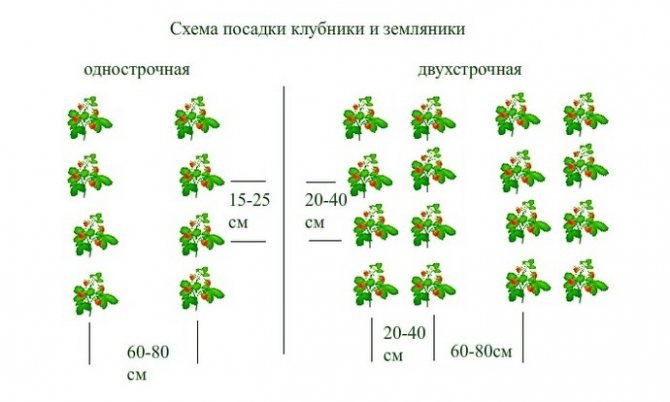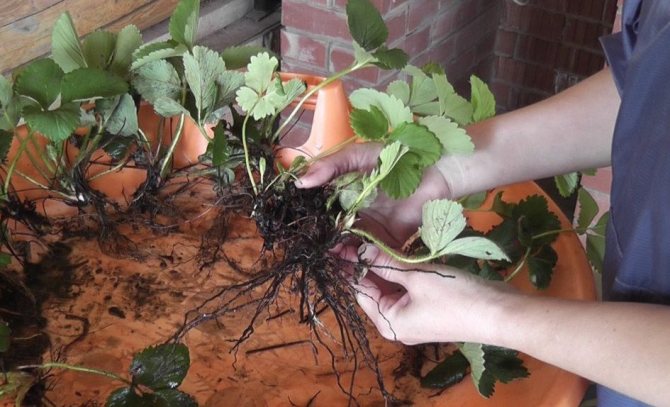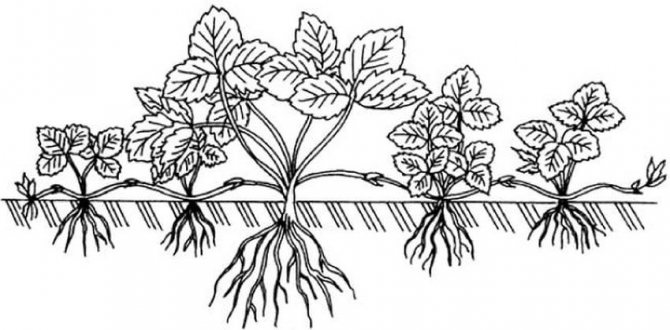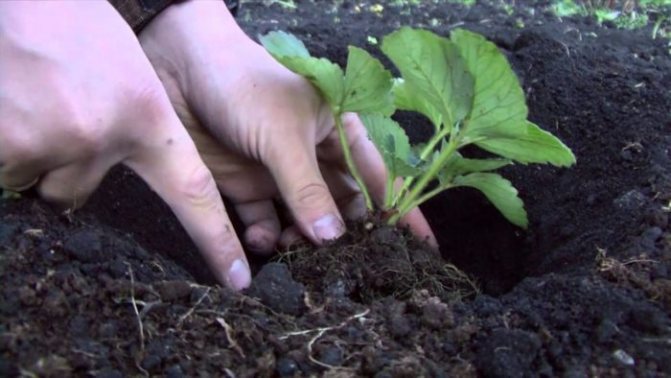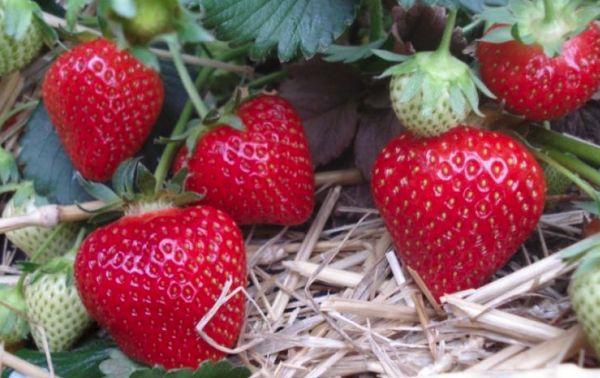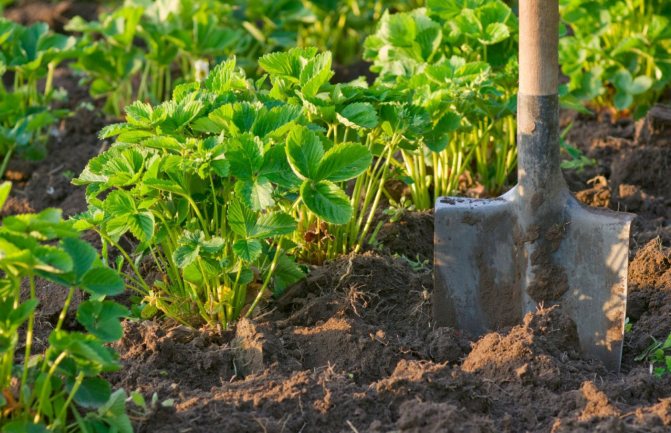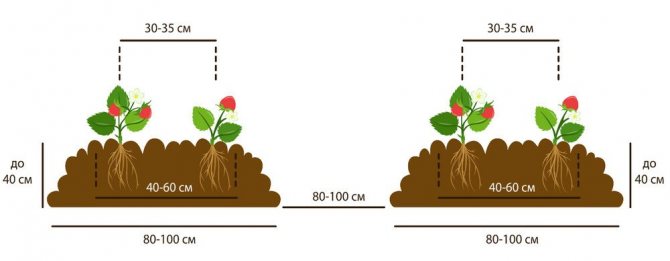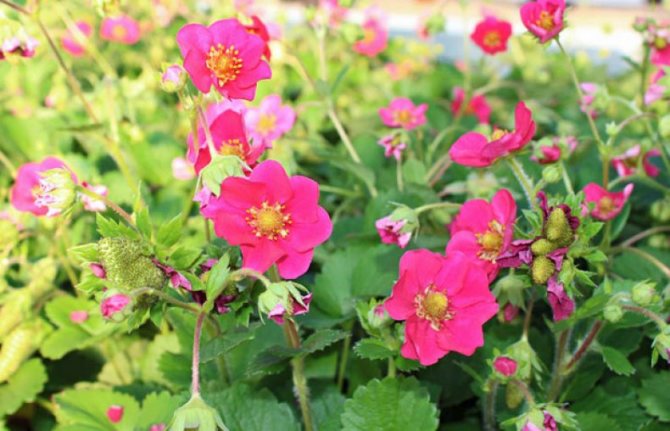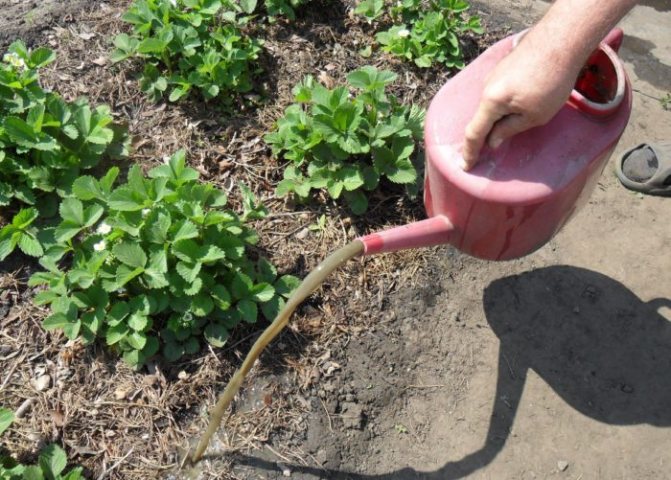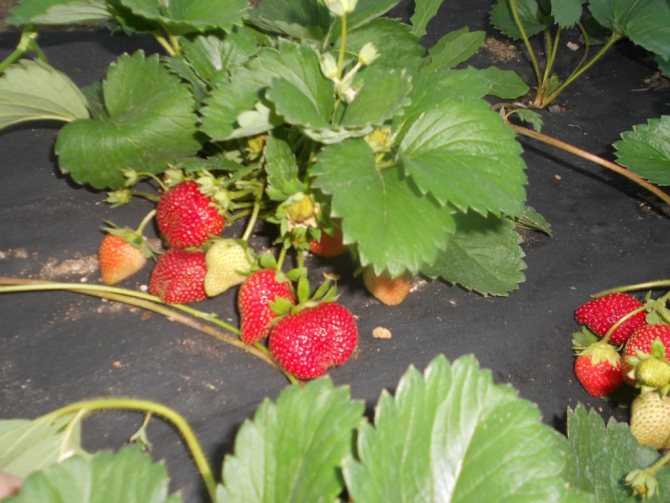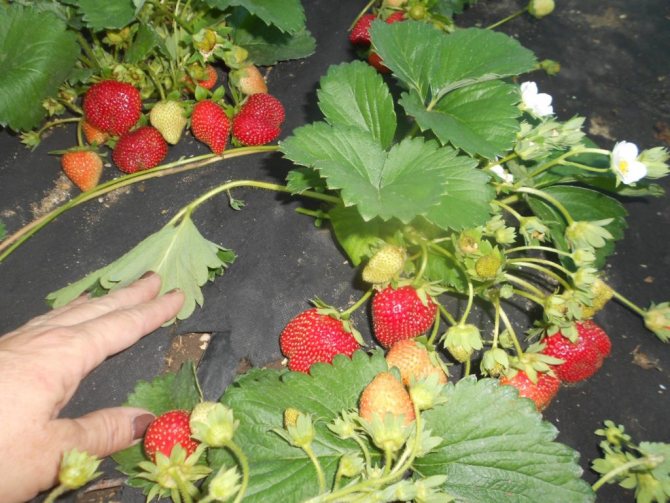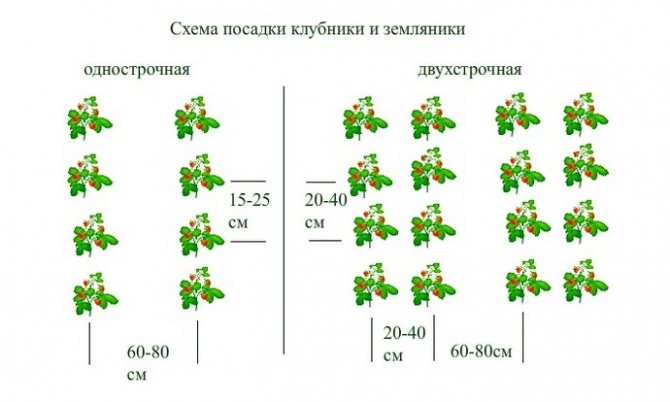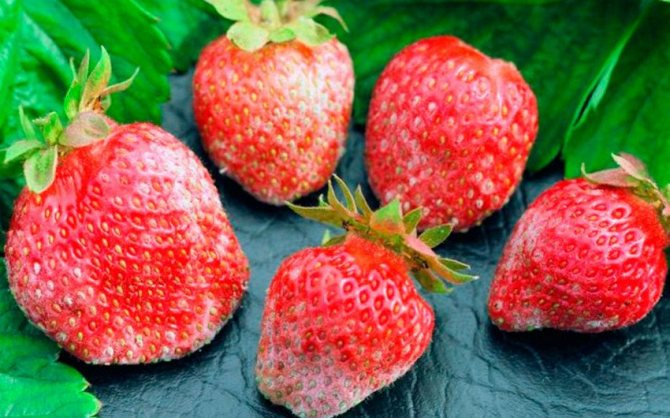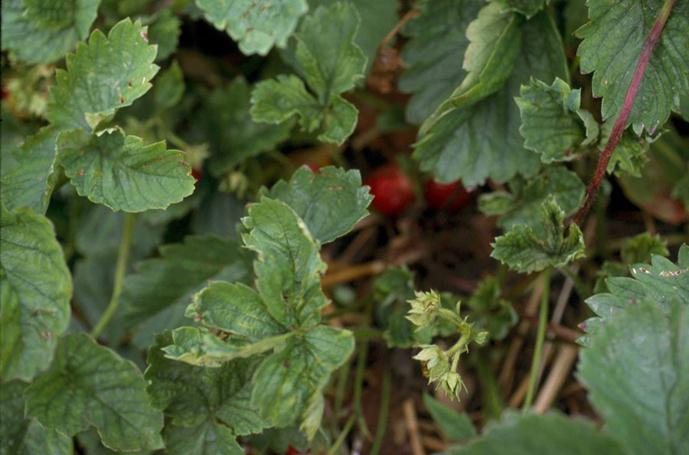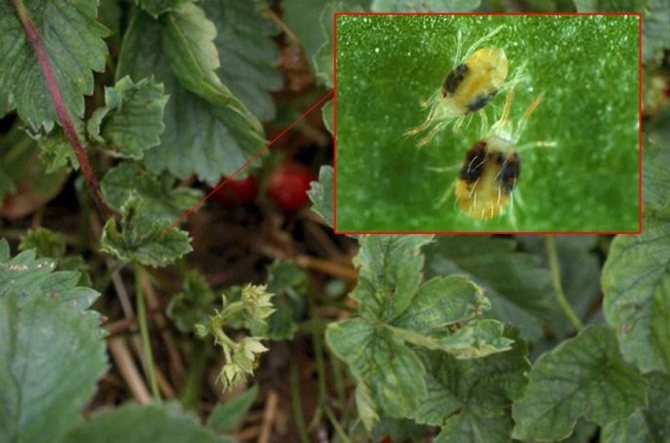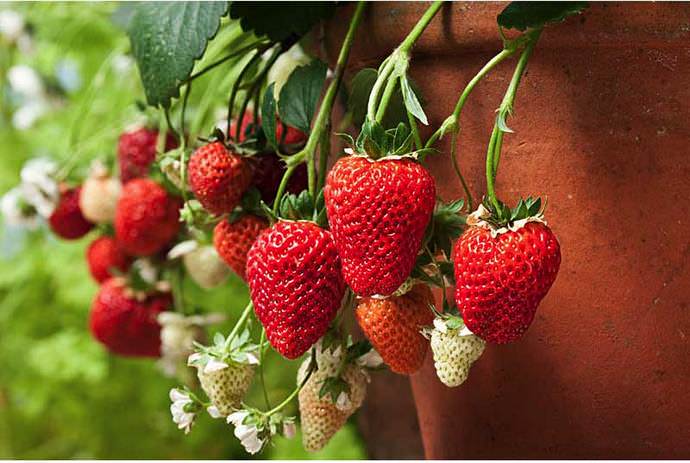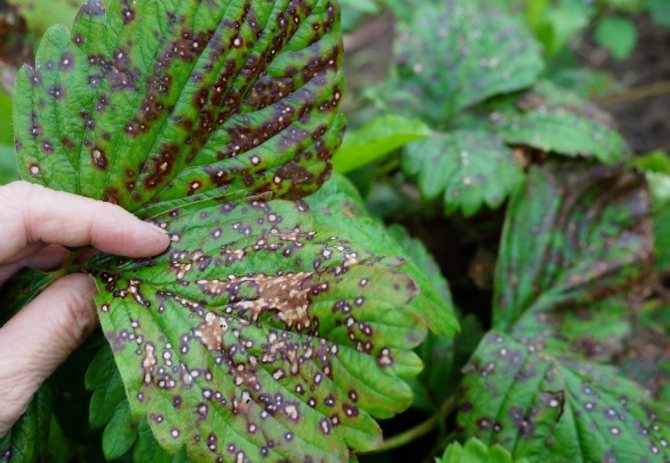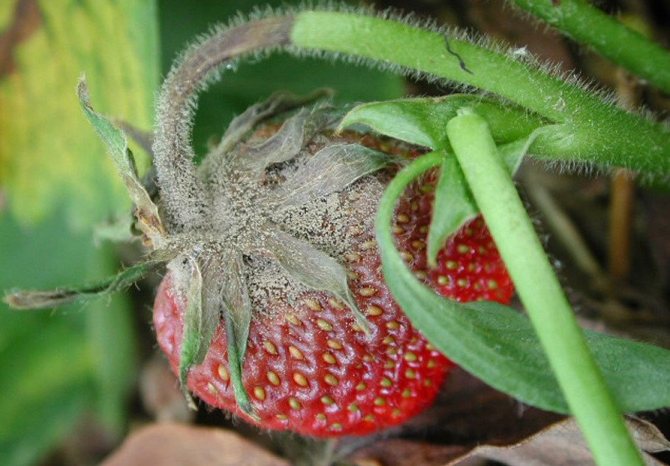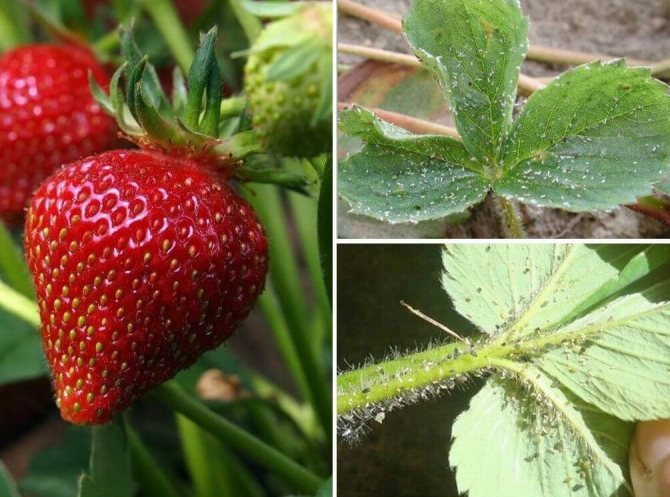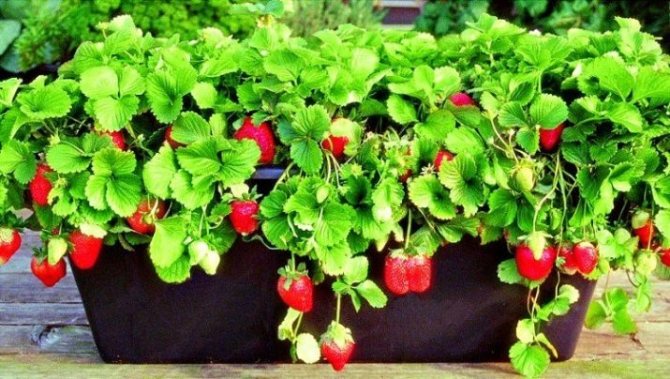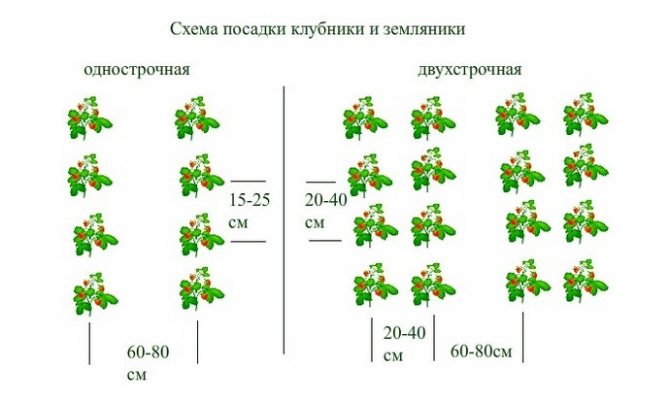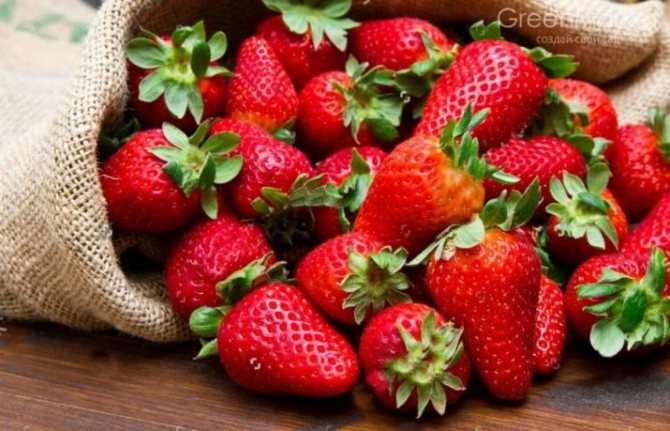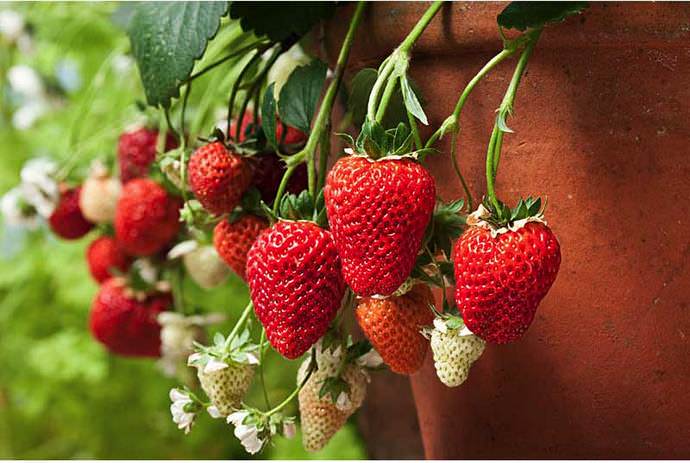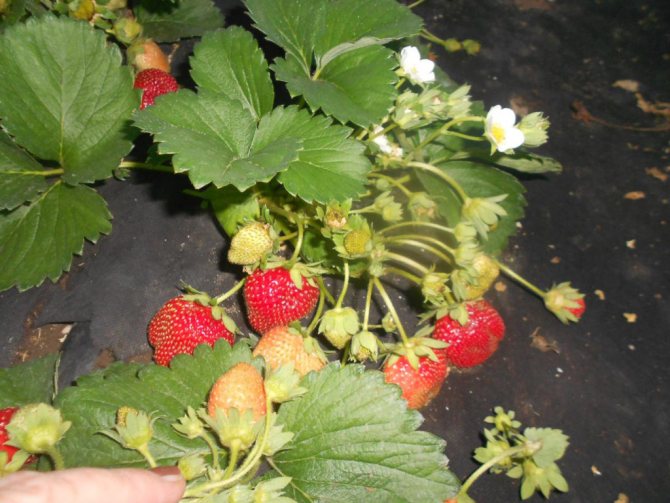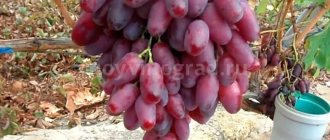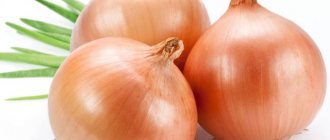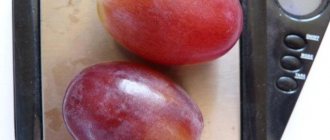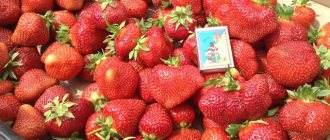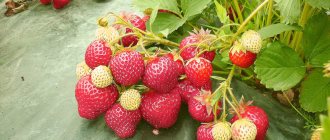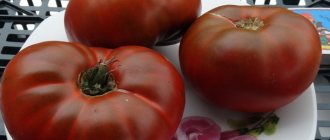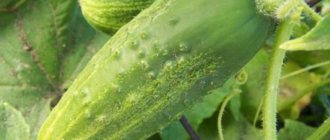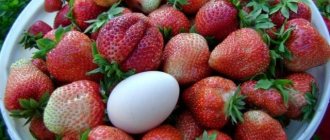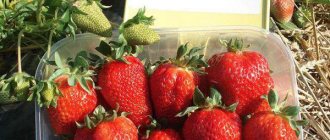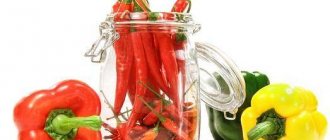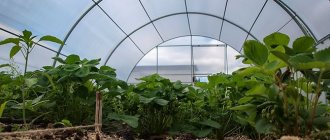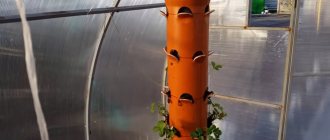Strawberry Tristar attracts us by the fact that it can be grown not only outdoors, but also on the balcony. Winter colds and frosts are tolerated without problems, it is enough just to cover the beds after harvesting. We usually plant in the spring, they root perfectly. Although there are not very many antennae, there are no more than a dozen of them on each bush, but for us it is quite enough, we grow only for the needs of our own family. Care is simple, all you need to do is weed out weeds in time, loosen the beds, mulch them, water them as needed, periodically feed them, we usually water the mullein solution. And remove dry leaves all the time. But all this does not take a lot of time and effort. Delicious and juicy fruits delight us all, and especially children, until late autumn. The younger ones happily eat strawberries immediately after picking, even sugar is not needed, just pour sour cream. We use the bulk of the berries fresh, and what remains is partially frozen. But more often we cook jam, because large and dense berries look very beautiful on the table, and it tastes good. We do not roll compotes for the winter, we do it only in the summer, for momentary consumption.
I found a strawberry variety that contains a minimum of carbohydrates and does not raise their level in the blood at all. As a low-carb dieter, this worked very well for me, but I know it can also be eaten by high-sugar people. Seedlings were grown from seeds at home. At first, I kept them in the refrigerator for 2 weeks (hardening to increase frost resistance and disease resistance), then I germinated them, and then planted them in well-fertilized soil. In the same place, Tristar can grow for 2 years, then it must be transplanted to another. The bush itself gives a crop for 4 years in a row. Gives 2 harvests over the summer: in early June (the most voluminous and in August (the largest berries). Bushes are tall, some are more than half a meter, but with a moderate number of leaves. Whiskers form, on average, 5-10 from each bush. If you plant seedlings in the spring, then the soil should be prepared in the fall. I brought in superphosphate and organic matter, also potassium chloride. In the 1st year I cut the flower stalks to allow the strawberries to take root. I water all summer, in the heat more intensively. Tristar is able to withstand frosts. I like the taste of strawberries very much , despite not a small amount of sugars, it is not sour, but slightly sourish. The berries are juicy and aromatic.
This is one of the few varieties that grows normally in our loamy soils. But before planting, we introduced enough humus into the soil - we bought seedlings in a nursery near Vologda, and did not want to lose them from illiterate care. Sprawling bushes, planted at a distance of 40 cm and left 50 cm between rows. Although it was recommended by the agronomist to remove the first peduncles, we only partially removed them - we wanted to try the berries of a new variety. In the first fruiting, the berries are not the largest, they are 20-25 grams each. Autumn - larger, up to 50 grams. The pulp is very juicy, but if watering is not enough, it will be dry. It is required to ensure that the soil does not dry out, we water the site a couple of times a week. This variety gives few side shoots, leaving is not difficult. But after each watering, it is advisable to loosen the soil and mulch. We use hay for mulch.From fertilizers we add nitroammofosku in the spring before flowering (1 tablespoon per bucket of water) and bird droppings in the fall, half a liter of solution for each plant. Bushes of this variety winter safely, we only cover them with fallen leaves from the trees, that's enough.
Reproduction
When propagated by seeds are guided by the following rules:
- Planting material is sown in February or early March.
- Seeds are scattered over loose moist soil, sprinkled with dry soil on top, covered with polyethylene and placed in the sun.
- As soon as the first shoots appear, the polyethylene is removed, the container is transferred to a cooler place, but make sure that the lighting is sufficiently bright.
Seedlings should not be deepened during transplantation. Make sure that the growth point is at ground level.
When breeding with a mustache, do this:
- The most powerful mustache is chosen, the rest are removed.
- When the roots develop on the rosettes, they are added dropwise without separating them from the main bush.
- In August, new plants are separated from the mother, then when transplanted in autumn they take root quickly.
Another breeding method is dividing the bush:
- A large healthy bush 2-3 years old is carefully dug up.
- A sharp knife is disinfected in a strong solution of potassium permanganate, they cut the plant into three parts, making sure that each has good roots.
- The planting material is placed in the wells.
Landing
When planting strawberries, you need to be guided by the following rules:
- Choose a sunny area, it is desirable that the soil is neutral or slightly acidic.
- Prepare the soil in advance: clear it of weeds, apply organic fertilizers: a bucket of rotted manure or compost with half a bucket of ash per square meter.
- Apply mineral fertilizers 20 days before planting.
- Form holes, water them and plant plants in them, straightening the roots.
- After the end of planting, water the plants again. There should be a distance of 30 cm between the holes.
To neutralize an allergic reaction to strawberries, you need to drink it with milk or eat any dairy product after it.
Video
Fruiting of the Tristan F1 hybrid outdoors is demonstrated by a gardener from the Rostov region:
You can learn about the peculiarities of planting and growing ampelous strawberries, as well as about its autumn preparation in the northern regions from the following videos:
For several years she worked as a TV program editor with leading producers of ornamental plants in Ukraine. At the dacha, of all types of agricultural work, he prefers harvesting, but for the sake of this she is ready to regularly weed, pick, pinch, water, tie, thin out, etc. I am convinced that the most delicious vegetables and fruits are grown by your own hands!
Found a bug? Select the text with the mouse and click:
Humus - rotted manure or bird droppings. It is prepared like this: manure is piled in a heap or pile, sandwiched with sawdust, peat and garden soil. The collar is covered with a film to stabilize the temperature and humidity (this is necessary to increase the activity of microorganisms). The fertilizer "ripens" within 2-5 years - depending on external conditions and the composition of the feedstock. The output is a loose homogeneous mass with a pleasant smell of fresh earth.
From varietal tomatoes you can get "your" seeds for sowing next year (if you really like the variety). And it is useless to do it with hybrid ones: the seeds will work out, but they will carry the hereditary material not of the plant from which they were taken, but of its numerous “ancestors”.
The novelty of American developers is the Tertill robot, which weeds in the garden. The device was invented under the guidance of John Downes (the creator of the robot vacuum cleaner) and works autonomously in all weather conditions, moving on uneven surfaces on wheels. In doing so, he cuts all plants below 3 cm with the built-in trimmer.
It is necessary to collect medicinal flowers and inflorescences at the very beginning of the flowering period, when the content of nutrients in them is as high as possible. Flowers are supposed to be picked with hands, breaking off rough pedicels. The collected flowers and herbs are dried, scattered in a thin layer, in a cool room at a natural temperature without access to direct sunlight.
Tomatoes have no natural protection against late blight. If late blight attacks, any tomatoes (and potatoes too) die, no matter what is said in the description of varieties ("varieties resistant to late blight" is just a marketing ploy).
One of the most convenient methods to prepare a grown crop of vegetables, fruits and berries is freezing. Some people believe that freezing leads to a loss of the nutritional and beneficial properties of plant foods. As a result of the research, scientists have found that there is practically no decrease in nutritional value when frozen.
Convenient Android applications have been developed to help gardeners and gardeners. First of all, these are sowing (lunar, flower, etc.) calendars, thematic magazines, a selection of useful tips. With their help, you can choose a day favorable for planting each type of plant, determine the timing of their ripening and harvest on time.
The homeland of pepper is America, but the main breeding work on the development of sweet varieties was carried out, in particular, by Ferenc Horvat (Hungary) in the 20s. XX century in Europe, mainly in the Balkans. Pepper came to Russia from Bulgaria, therefore it got its usual name - "Bulgarian".
In Australia, scientists have begun experiments to clone several grape varieties from colder regions. Climate warming, which is predicted for the next 50 years, will lead to their disappearance. Australian varieties have excellent characteristics for winemaking and are not susceptible to diseases common in Europe and America.
Care and feeding
It is more difficult to care for remontant strawberries than for regular ones:
- Loosening the soil as soon as it dries slightly after watering.
- Removal of whiskers if there are no berries on them and reproduction by rosettes is not planned.
- Mulching with cut grass, straw or sawdust to reduce the frequency of watering.
- Fertilization after the first collection of berries, and then when new flower stalks appear. It is good to use for this infusion of mullein in a ratio of 1:10 or bird droppings in a ratio of 1:20.
- Covering the beds with white agrofibre before winter. At the first warming, it must be removed.
Agrotechnics
This variety thrives on soils with neutral acidity, loamy or sandy loam. If the soil is heavy, it is recommended to mix river sand into it. Planting is carried out according to the dense two-line method - 20 cm between the bushes and about 50 cm between the rows. This strawberry will not tolerate strong crowding, therefore, if possible, it is even worth observing the distance between the rows in the region of 60 cm, at least as experienced gardeners advise. Since the variety belongs to plants with a neutral daylight hours, it is permissible to grow in greenhouses with winter heating and on the loggias of apartments.
If the crop is planted in April, and the first wave of peduncles is removed, then the crop can be harvested in early July. The very first peduncles must be removed. There is a practice of using seedlings for propagation, then fruiting is avoided. The best method is called the use of the mother bush for subsequent breeding. It is advisable to make the beds for the harvest and for reproduction separately.
In the case of growing strawberries "Furor" in the greenhouse, the mustache is removed until mid-summer, which increases the yield.
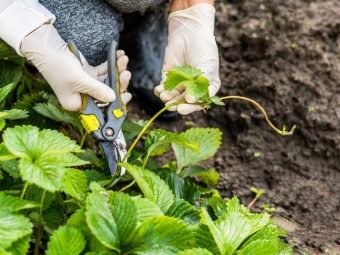
Top dressing for the culture is required, and very intensive. This is necessary to maintain good yields and the very size of the berries.Top dressing is needed both leaf and root - a full range of trace elements. For the winter period, the strawberries are covered with a special cloth and mulched. The colder the climate of the strawberry-growing zone, the more thoroughly it is prepared for winter.
The Furor variety tolerates winter quite well both in the Moscow region and in Siberia. In the northern regions, when there is a large snow cover, the main thing is to prevent the plants from getting caught under the cover in case of warming. As a heater, you should not use moisture-absorbing coatings, and agrotechnical fabric must be removed when warming. In spring, a cold wind brings danger to strawberries. It can dry out the plants, so cover them up again.
If you follow these recommendations, you can achieve the declared indicators for picking berries from bushes.
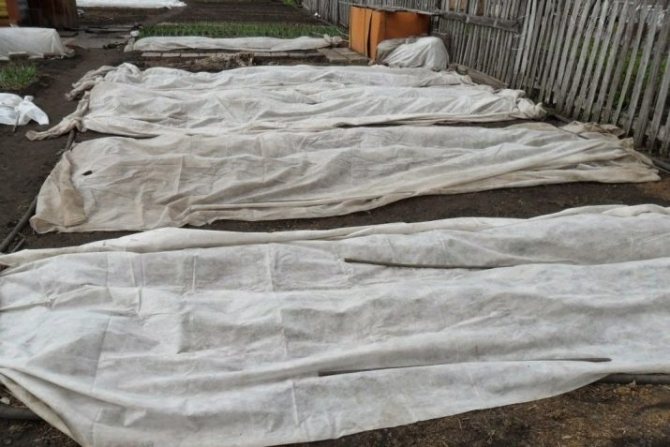

Diseases and pests
They can threaten:
- Gray rot - affects plants in damp weather, the bushes are treated with copper chloride, the affected fruits are destroyed;
- Powdery mildew - the leaves infected with it turn brown, curl. They are destroyed, and the plants are treated with a weak solution of potassium permanganate or colloidal sulfur;
- Brown spot - leaves turn brown, fall off. Plants are treated in spring or after harvesting with copper chloride;
- Strawberry mite - to combat it, the bushes are sprayed with karbofos immediately after harvesting;
- Aphids - they are frightened off by watering with a solution of wood ash, to which laundry soap is added. To prepare it, you need to take 2 glasses of ash per 10 liters of water. This tool is completely safe.
Strawberry Charlotte - description
The first plants were obtained in 1995 in France, originator of CIREF, parent varieties Mara des Bois x Cal.19. In production since 2004
It is difficult to call the strawberry variety Charlotte truly commercial or industrial - it is good for the garden, for low-volume production, as an addition to the main line of industrial varieties for small and medium-sized production. Most often it is grown by gardeners, for the fresh market, retail trade - thanks to its true dessert taste, high quality berries, it is appreciated by gardeners in small farms in Europe, as well as in Russia, Ukraine, Belarus.
- Fruits are large, 14-16 g, shape from ovoid to round-conical, regular. The color is intense red, the skin is moderately shiny. The achene is not recessed; it protrudes above the surface. The skin is strong, firm, thin, the pulp is very juicy and tender, with a pronounced strawberry smell, high sugar content. Its pulp is of medium density, according to the description of the patent holder, according to reviews, it is somewhat softer than San Andreas, Alba, but somewhat harder than the juicy and not particularly transportable Miracle of the World. Nevertheless, the berries are not famous for their high transportability - partly due to this feature, the variety is difficult to use as an industrial one.
- The bush is of medium vigor, semi-spreading, of medium density.
- The leaves are large, the upper side of the plate is dark green, slightly wrinkled.
- Peduncles with flowers are located above the level of the leaves, lodging under the weight of ripening fruits.
- The reproduction rate is moderate - like all remontants, it does not give no whiskers. The seedlings take root well.
- It is resistant to late blight, powdery mildew, the level of resistance to spots and other leaf lesions is average.
Care features
Due to the compressed type, the plants do not require a large area of nutrition. The planting pattern is 30 x 30 cm between plants, between rows 130-150 cm. Do not reduce the feeding area, hoping for a small demand for small bushes: Charlotte will not tolerate thickening.
Not particularly demanding on the applied top dressing. This does not mean that Charlotte will tolerate the absence of fertilizers - as an intensive type of varieties, it does not respond with a sharp chopping of fruits with a medium hand to the agricultural technology most often used in amateur gardening.Nevertheless, the introduction in sufficient doses of at least NPK for neutrals is necessary at the stage of flowering and fruit formation, as well as after fruiting. Nitrogen is introduced with caution for the winter.
The peak of fruiting occurs in the second year after the spring planting, in the first after the autumn planting. In the fourth year, you should change the planting material.
To get your own Charolotta seedlings, it is more expedient to keep fruit-bearing plants on one bed, the mother plant, where the peduncles or the color is removed, on the other. This will give additional strength to the plant, increase the rate of formation. The principle is the same: if you need a berry, we cut off the mustache, if the mustache, we tear the berry at the root (more precisely, for the color).
Reviews about Charlotte
Despite the low prevalence - out of habit, we start those varieties that everyone has in order to be like everyone else - Charlotte strawberries have collected numerous reviews: do not pass by this. A real strawberry taste with a hint of nutmeg, a delicate bright aroma - first of all, gardeners and farmers praise the quality and taste of the berry, comparing it with wild strawberries and earthworms. They call it better in taste among a neutral day (remontants) - and they are not far from the truth: there are few of them. And only then do they move on to disadvantages - and there are some. Much depends on the growing conditions and the agricultural technology used, but the general trends are as follows:
- Not a commercial yield - it is called a variety for itself. Or for the fresh market in low volume and medium.
- low sensitivity to brown, white leaf spot - true for regions with wet summers, fluctuations in day and night temperatures;
- low or medium transportability. However, this statement is controversial - partly the hardness depends on the composition of the soil and agricultural technology, the amount of precipitation, the degree of maturation - if objectively, then the transportability is average.
Origin and destination
"Tristan" (Tristan) - one of the brightest representatives of the strawberry collection, developed by breeders of the company ABZ Seeds (Netherlands), which specializes in the creation of new F1 hybrids. To date, the Dutch have bred more than 20 decorative varieties, distinguished by large flowers, unusual in shape and bright color in white, pink and red tones. The beauty and productivity of these plants have earned high marks from specialists and have repeatedly received prestigious awards at international exhibitions in Europe and the USA. None of the decorative strawberry hybrids is included in the State Register of Russia, and they also do not have official registration in other post-Soviet countries. Nevertheless, many domestic summer residents are already well acquainted with these plants and have experience in growing them.
Strawberry hybrids are divided into groups intended:
- for amateur cultivation as ornamental plants in the open field, in pot and ampelous culture, in home and greenhouse conditions. Moreover, they serve not only as a decoration for landscape design or interior design, but also provide high yields of berries;
- for the commercial cultivation of flowering seedlings, which are in great demand in the market, and the commercial production of berries.
Characteristics of the variety
Charlotte is considered the standard among remontant strawberries, the taste of its berries is distinguished from the background of other varieties. In addition, it has the following characteristics:
- early maturation;
- long-term fruiting;
- large leaves;
- fruits of a round or ovoid shape weighing 15–20 g or more;
- berries are sweet and aromatic, with tender and juicy pulp.
- The advantages of this strawberry variety, in addition to the amazing taste, include:
- resistance to various pests and diseases;
- seedlings take root well and are not very whimsical to the quality of the soil;
- good frost resistance.
At first glance, Charlotte has no shortcomings, except that they can be attributed to thin skin of berries, which is why the crop is not suitable for transportation and long-term storage.
Feedback from netizens
I want to support Leonid Ivanovich, Charlotte has a wonderful, very delicate aroma of wild strawberries, a very individual, absolutely not oversaturated smell. The taste is also excellent, if you do not pick the green one, but let it ripen completely, the berry becomes very tasty and sweet. The size of the berry varies for everyone. varieties depending on the weather and care, if several varieties grow nearby, then the size of the berry for everyone decreases or increases at the same time just to a different extent, I think that the problem is not in the variety, but in the methods of care and in external factors. Experience confirms that neither grapes, neither peaches are competitors to strawberries on the market - each product has its own buyer, this year Charlotte has not been stuck on the shelves.
olechka070
Reproduction methods
Charlotte strawberries are propagated in two ways: dividing the bushes and using a mustache... Let's consider both methods in more detail.
Reproduction by antennae
In order to propagate strawberries using mustaches (stolons), you need to choose a large and healthy bush and cut off all flower stalks from it. Then wait until rosettes form on the antennae, and leave the strongest ones. Next, you need to do the following:
- Prepare pots with peat or compost mixed with garden soil and sawdust.
- Without tearing from the main bush, place the rosettes in the pots.
- Dig the earth regularly, weed and water.
- It is possible to separate young plants from the main bush in August, and in autumn the plants are transplanted to a permanent place.
You can not use pots, but immediately plant the stolons in the ground, as shown in the photo below:
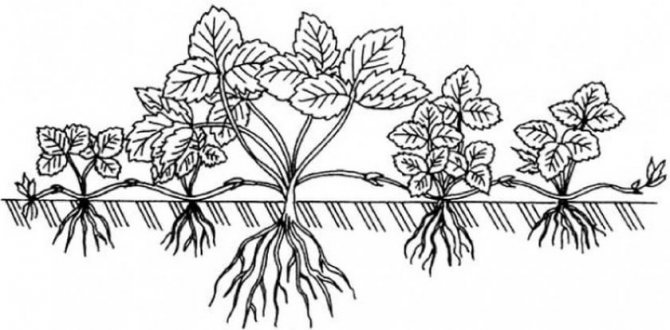

Dividing the bush
The reproduction process by dividing the bush involves the following procedure:
- Dig out a strong and healthy shrub 3-4 years old.
- Tear off dry leaves from it, shake off the roots from the ground.
- Dip the bush with the roots into the water (this will make it easier to separate them).
- Cut large rosettes in half.
- Leave only young and healthy roots, and cut off the old and shriveled ones. If there are peduncles, then they also need to be removed.
- Place the seedlings in pots with a mixture of soil and peat (1: 1) and water regularly.
- After 1–1.5 months, young plants will be ready for transplanting to a permanent place.
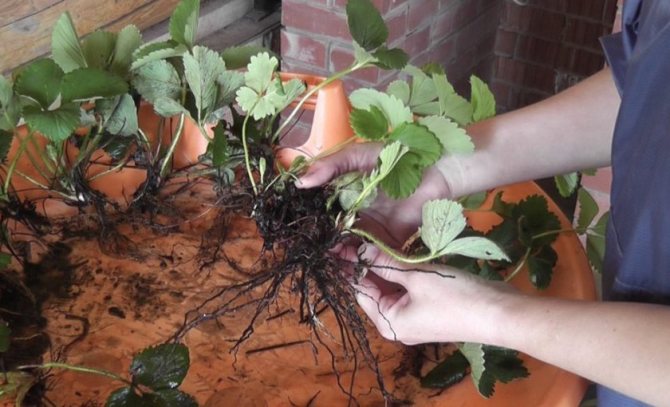

Description of the variety and photo
Tristar is popular with culinary specialists. The plant has good taste, attractive appearance. The main cultivation regions of the variety are Europe, South and North America and Australia. Strawberries are not very picky about care. The optimal soil for growing it is loamy soil. The bushes are of medium height. Their diameter reaches 75 cm. Up to 10 whiskers can form on one bush.
Important. The variety tolerates low temperatures well and has the ability to self-pollinate.
The most abundant harvest is taken in the spring. In autumn, the berries of the plant reach their maximum size. The second crop begins to form in August. Ripening in the open field continues until the first frost.
Among the advantages:
- disease resistance;
- the possibility of growing indoors;
- high productivity.
It is recommended to remove the peduncles in the first year. This is done to strengthen the plant and better adapt it to the soil and climatic conditions of growing. It tolerates a cool climate perfectly. The yield is maintained 3-4 years after planting.
Landing features
In order for strawberries to bring a good harvest, it is necessary to carefully select a place in the garden bed with suitable soil, plant seedlings correctly, water and fertilize the beds in time.
Choosing a suitable site and material
First of all, it is necessary to choose a sunny area for planting, a little on a hill, preferably with a low groundwater table. It is desirable that this area be protected from through winds. In addition, it must be cleared of weeds and debris.
Preparing the soil for planting
For strawberries, neutral or slightly acidic soil is best suited. 20 days before planting, you need to add mineral fertilizers to the soil, and just before planting - humus (7–8 kg per 1 m²), and dig up the garden well. After that, you need to form shallow holes under the bushes, into each of which pour 0.5 liters of water.
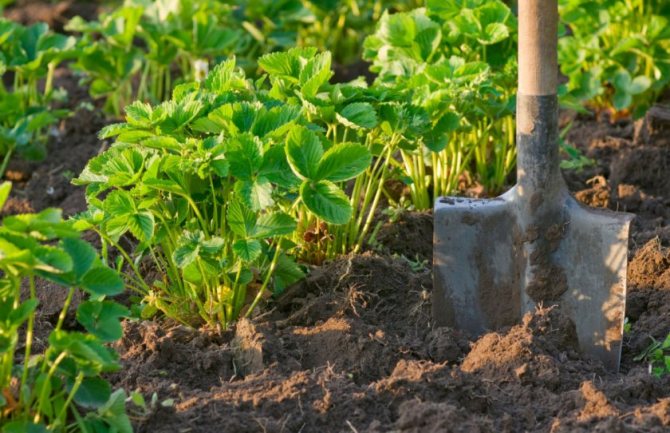

Disembarkation scheme
Charlotte bushes are planted at a distance of 30 cm from each other, between rows - 40–70 cm. Thanks to this scheme, the bushes do not thicken, they are well ventilated, and the fruits grow large and sweet.
Diseases and pests
The Charlotte variety is resistant to diseases and pests, but with improper care, some insects and diseases can affect the plant:
- Powdery mildew- a fungal disease, as a result of which an uneven white bloom appears on the back of the leaves. The disease spreads from the bottom up, under its influence, the fruits crack and rot, and the leaves curl and dry out, acquiring a brown-brown color. The reasons for the appearance of this ailment are: rare removal of the mustache, dense and clogged planting of plants, oversaturation with nitrogen fertilizers. To combat powdery mildew, phosphorus-potassium fertilizers are applied, cut and eradicated diseased areas on plants.
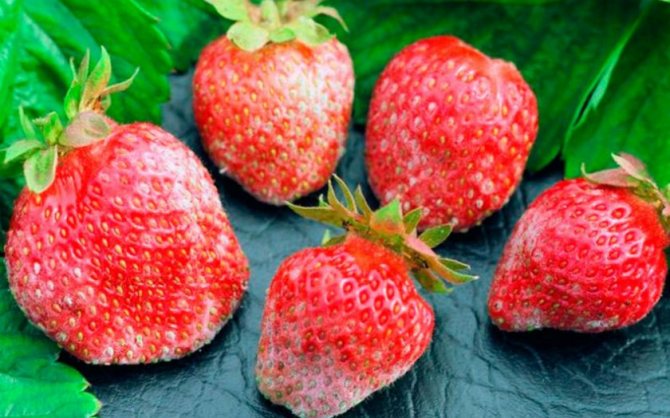

Gray rot - a fungus that affects the entire plant. It spreads in wet weather with the help of wind or insects. A gray bloom appears on the surface of the bush, and the fruits become watery and dry out over time. To prevent the disease from arising, you need to choose the right future site for strawberries. It should be a sunny and well-ventilated place, on a hill. One of the methods of preventing this ailment is mulching the beds.
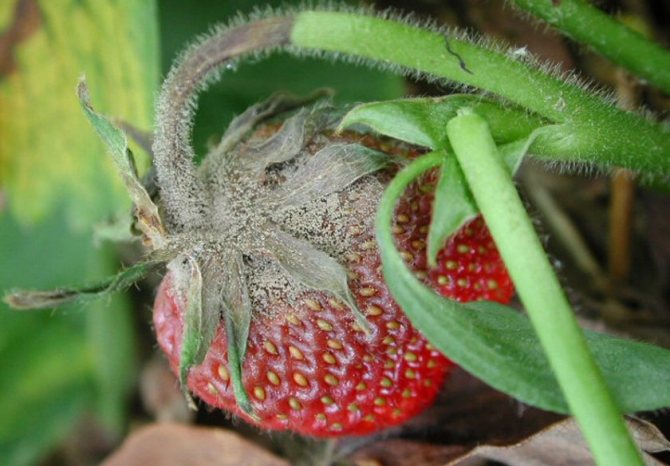

Brown spot Is the most common fungal disease affecting strawberry rows. It appears as a result of improper care, strong planting density and high soil moisture. Brown-brown spots of a round or oval shape appear on the leaves. Over time, the disease grows, the leaves wither, which leads to the death of the plant. To prevent the appearance of the disease, it is necessary to provide the culture with proper care, and in case of damage to the bushes with brown spots, treat them with the drug "Fitosporin". Its use is possible even during the period of fruit ripening, since it does not pose a danger to human health.
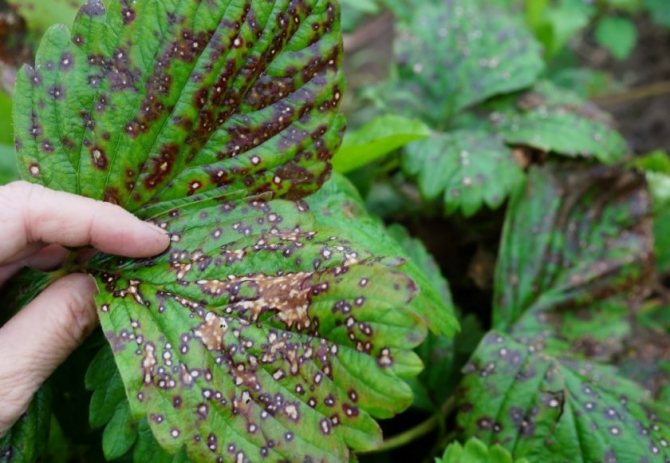

Strawberry mite - the main sign of its presence is foliage twisted into tubes. At first, the bush continues to develop and even gives out the first fruits, but eventually dies. The foliage is finally depleted, turns yellow and falls off, further development and growth are inhibited, the plant dries out. To fight the mite, the bushes are sprayed with Karbofos immediately after harvesting.
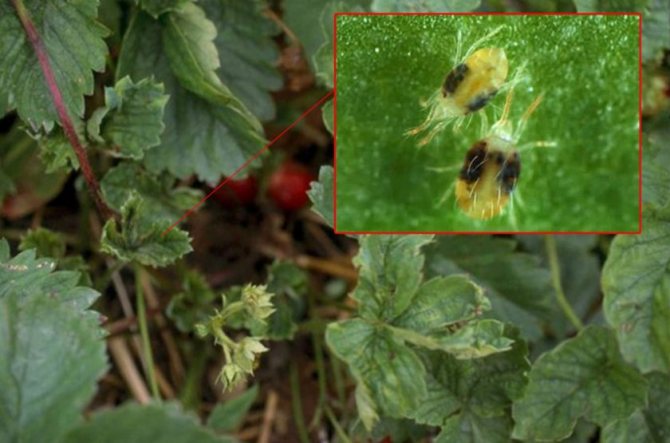

Aphid - an insect that harms the crop in large quantities. Aphids suck sap from plants, which leads to their weakening and further death. You can notice pests inside the bush. At the same time, the leaves curl and wither, and a large number of ants can be seen in the soil. To get rid of aphids, chemical and biological products are used (Fitoverm, Biotlin, Kinmiks, soap or garlic solution).
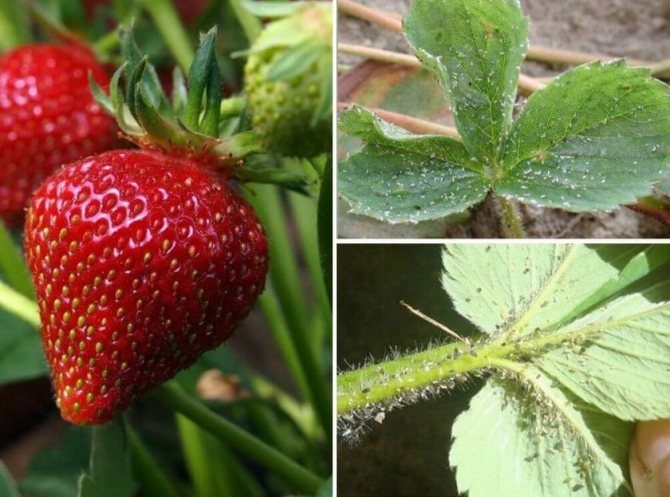

Features of the plant and consumer qualities of berries
"Tristan F1" differs from most remontant varieties and hybrids of garden strawberries in compact bushes (up to 25 cm in height and up to 30 cm in diameter) and almost complete absence of whiskers, which makes it possible to grow it with a high planting density and in small-volume pots.
When planting, it is recommended to leave distances between the bushes of 15-20 cm, and in the aisles - 30-35 cm.
Plants bloom early and very profusely; flowers are large with dark pink petals. The first berries usually ripen in early to mid June.Intense flowering and fruiting continue almost continuously during the entire growing season (about 4 months), in the open field - until autumn frosts.
Berries are aligned: large and medium-sized (weighing up to 25-30 g), elongated conical or biconical shape, dark red, shiny. Their taste is called dessert with a rich sweetness that depends little on the temperature during ripening. The hybrid is considered highly productive: the crop is formed not only on the mother bushes, but also on daughter outlets (even without their rooting), which grow, however, in very small quantities. The harvested berries are well transported.
Harvesting and storage
The repairability of the Charlotte variety, with good care and the experience of the gardener, allows you to regularly harvest the crop throughout the season. Ripening of the variety is often uneven; you need to pluck completely red and ripe fruits. It is advisable to visit the beds every day and inspect them for ripe berries.
Harvesting Charlotte is better in the evening in dry season. In rainy weather, you should not delay the collection, so that the berries do not get wet and do not start to rot. If they do get wet, they must be dried in a cool dry place.
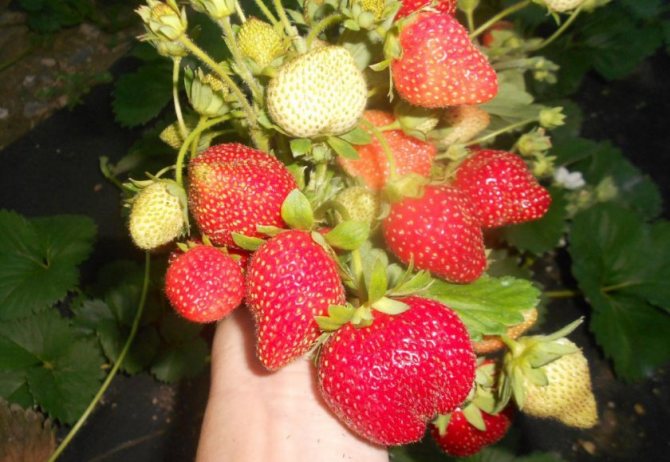

The best way to preserve strawberries is to pick them off 2-3 days before they are fully ripe (with a cup and stem). It is better to work with gloves and cut the stem with scissors, thus, the fruit is less injured.
For storage, cardboard and wooden boxes or plastic containers are well suited. The bottom must first be covered with soft paper or cloth. Strawberries are laid out in 1-2 layers. The containers with the harvest should be moved carefully, since minimal shaking can damage the berries, and they will crumple and begin to rot.
Charlotte strawberry is a very tasty and valuable berry. Its advantages more than cover its disadvantages, but it is not the most suitable for a large-scale sale. But it can be planted in a summer cottage and delight your loved ones with a sweet harvest until autumn.
Watering
Tristar is a moisture-loving variety. Regular watering is required between early May and September. The best way is drip irrigation. Strawberries should receive sufficient moisture, but water must not be allowed to stagnate. The first watering of those grown in the open field is carried out before the emergence of the first shoots to warm the earth.
Each type of soil must have its own moisture indicator:
- sandy - 65-70% during growth, 60-65% after harvest;
- heavy soil - 80%;
- black soil - 70-75%.
The average water consumption for irrigation of light soils is 80-100 cubic meters per hectare. On loams, it increases to 120 cubic meters per hectare. In dry spring watering of plants begins at the end of April. In a cold summer, they are watered no more than 3 times a month.
Important. During the growing season, planting is watered at least 1 time per week.
On hot days, the amount increases 2-3 times. It is especially important to strengthen on sandy soils. In autumn, high humidity poses a serious danger to strawberries. It leads to decay of the root system. In moist soil, pathogens and bacteria actively develop, leading to the death of the plant. In dry autumn, the beds are watered once a week.

